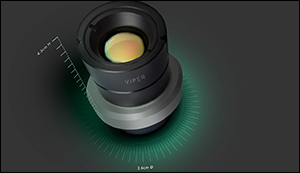Night vision for self-driving cars
18. 10. 2017 | IEEE Spectrum | spectrum.ieee.org
Elon Musk famously thinks that cars can be made to drive themselves without relying on expensive laser-ranging lidars. But while Tesla is moving ahead with one fewer sensor than most self-driving car companies, a new startup wants them to add yet another—an infrared camera.
Adasky is developing a far infrared thermal camera called Viper that it says can expand the conditions that automated cars will be able to operate in, and improve safety.

Passive infrared vision spots the differences in the heat emitted by objects in the road ahead. Warm-blooded humans and animals are naturally prominent, while road surfaces stand out from nearby vegetation. Oncoming headlights, direct sunlight, and abrupt lighting changes (which drivers experience when exiting a tunnel) do not wash out the entire scene, as they can for normal cameras.
Adasky says its system is currently being evaluated by several car companies and suppliers, and the startup hopes to start mass production in 2020 or 2021.
Read more at IEEE Spectrum
Image Credit: Adasky
-jk-




